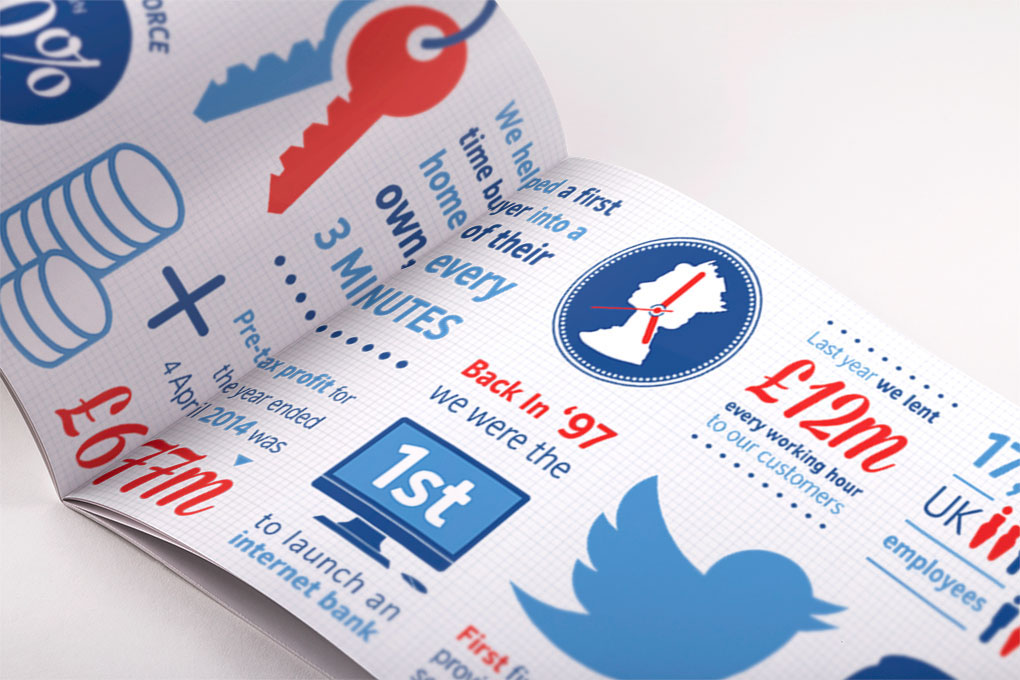Attracting and retaining talent is harder than ever.
We live in an age of increased complexity – where power has shifted from producer to consumer and employer to employee.
With the proliferation of digital devices, platforms, channels and apps, all of this “stuff” means brands need to act smarter to cut through the noise and stand out from the crowd. The competitive war for talent is truly upon us.
In 2015, Nationwide came to us with a problem:
“How can we attract the best talent in banking and financial services using a specific employment and careers website?”
If we could design a fast, responsive, visually engaging, content-driven careers website that spoke to Nationwide’s core target audience, we were confident we could lure candidates direct to the site and reduce excess spend on job boards and agency fees. Easier said than done, right?
Here’s the secret: by applying the core principles of marketing to the world of HR and recruitment, brands can design personalised user journeys that optimise the chance of engagement and convert a high number of visitors into candidates.
In the end, the results were spectacular.
Here’s how we reduced Nationwide’s cost to hire from £3,000 to £69.
Phase 1: Persona and Empathy Mapping
Our mission from day one was to focus our attention on the candidates: what are their fears, motivations and aspirations? What gets them up in the morning? What keeps them awake at night?
To deliver on this promise, we had to make sure the candidate was a good fit – before they even applied.
Persona Mapping helps clarify the behavioural identity of your ideal, star candidate. We walked Nationwide through an interactive workshop designed to pinpoint key characteristics about the candidates they were after. As a big part of their recruitment push was geared towards students and graduates, we even tracked social media for popular content and topical themes. All of this research and planning is geared towards gaining a 360-degree view of potential candidates and the various personas involved.
The personas identified needed to correlate across six key business divisions at Nationwide, resulting in excess of 4,500 hires per year. Together, we recognised a number of personas based on the emotional and rational aspect of our target demographics. Once the discovery and research phase was complete, we could move into design and implementation.
Phase 2: Website Build and Design
To create an integrated offering, we focused our efforts on building a mobile-first responsive site, placing the candidate at the heart of the site planning and architecture, UX and UI, content strategy and user behaviour. The site needed to be fully integrated with a third-party applicant tracking system, Lumesse. This gave us the opportunity to work with developers around the world to deliver the perfect solution for Nationwide.
We wanted the careers page experience to be as seamless, efficient and natural as possible.
To engage with candidates in the same vein as Nationwide’s customer service pages, we had to put their employer brand (or EVP) to work and use emotive storytelling to spur candidate engagement. These features included videos showcasing a ‘day in the life’ of graduate employees, a ‘friends and family’ section where hot questions are answered, an ‘advice and how to’ page designed to help candidates with their application, and a content hub of articles directly related to popular issues.
These all work on an emotional level because the candidate is triggered to engage and immerse themselves in the company’s offering. The website build and design hinged upon making things clear, simple and fun. We wanted the careers page experience to be as seamless, efficient and natural as possible.
Phase 3: Full Inbound Strategy
Nationwide were seeking top calibre applicants, so it wasn’t sufficient to simply deliver high traffic to the site – it had to be targeted and bespoke, or the strategy would fail. This phase of the development incorporated technical elements of SEO, PPC, Social Media and CRO.
Good SEO proved crucial in driving the right traffic to the site. Search keywords and timely content enabled Nationwide to shoot up the search rankings, making it easier for candidates to locate the careers page. For example, a student in their final year at university might search, “Should I choose a graduate scheme or a grad level job?” We encouraged Nationwide to create content aimed at answering and solving these questions.
By understanding what devices, social media channels and content these individuals were using and after, Nationwide have been able to position themselves as a source of help, knowledge and support.
It all centres around one focus – how can brands integrate and situate the lives of candidates on a careers page? Companies need to demonstrate how prospective roles would put certain skills to the test, enhance existing experience, and encourage growth.
In a sense, their careers page became a destination for engagement, not just a website.
Phase 4: Enhanced User Experience
Think about the levels of customer service that brands strive to achieve and maintain in today’s digital age. The competition is stiff, with brands like Amazon setting the standard sky-high.
Nationwide has great existing customer experience too, but their candidate experience didn’t match up. Together, we helped Nationwide create a seamless and enhanced user experience that put the candidate front and centre of all interactions.
Nationwide has great existing customer experience, but their candidate experience didn’t match up.
From start to finish, Nationwide’s online candidate experience process is now mapped and accounted for. Cool features like a heart icon at the top of the page allows candidates to save ‘loved jobs,’ and an added feature called ‘job alerts’ sends live updates to candidates throughout the application process.
It’s this attention to detail that creates a more streamlined journey for the candidate. For Nationwide, it shows a level of depth and thought to prospective applicants that can make all the difference in winning over hearts and minds.
Phase 5: Evolutionary Design
Implementation of what we call “Evolutionary Design” has played a major role in why Nationwide’s careers site has been so effective. Rather than build a site that will need to be completely overhauled every three years, we embedded functionality that would allow us to update and enhance the website on a continual basis.
Our team constantly test and add functionality to the site every few months. These technical design additions make the discovery and application process feel smoother and more instinctive. Again, our main concern was to place the candidate’s needs at the heart of our strategy.
Outcomes and Results
The benefits of a candidate-driven careers website are summed up quite succinctly: in the same time period, our strategy for Nationwide delivered 886 hires compared to only 4 hires via Total Jobs and Monster.
As marketers by trade, we believe that the world of talent attraction is ripe for a shake-up. The methodology and steps outlined above helped Nationwide reduce the average cost per hire from £3,000 to £69.75, increase mobile traffic by 300% and drive customer engagement by over 303%.
When brands identify the emotional and rational factors that drive candidates, it becomes much easier to design an effective careers website that not only dazzles applicants, but saves you money and finds you the best talent time and again.






